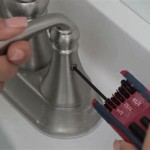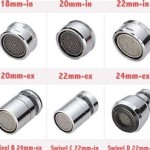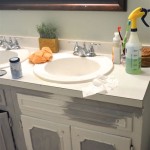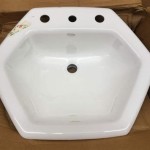How To Remove Old Grout in Bathroom
Removing old grout from a bathroom can significantly improve its appearance and prevent further damage caused by cracked or crumbling grout. This process, while potentially time-consuming, is manageable for homeowners with the proper tools and techniques. Successfully removing old grout allows for the application of new grout, restoring the integrity and aesthetic appeal of tiled surfaces.
Before commencing the grout removal process, careful planning and preparation are essential. This includes gathering the necessary tools, ensuring adequate ventilation, and taking precautions to protect surrounding surfaces and oneself. Rushing into grout removal without these preliminary steps can lead to inefficient work and potential damage to the tiles.
Gathering the Necessary Tools and Materials
The effectiveness and ease of grout removal largely depend on having the right tools. A variety of tools are available, each suited for different types of grout and tile configurations. Choosing the appropriate tools can minimize the risk of tile damage and expedite the removal process.
A manual grout saw is a common tool for removing grout. These saws typically have a carbide-grit blade and are designed to grind away the grout without damaging the surrounding tiles. Manual grout saws are best suited for smaller areas and delicate tiles, as they offer greater control.
An oscillating multi-tool equipped with a grout removal blade is another effective option. These power tools vibrate the blade rapidly, allowing for precise grout removal with minimal effort. Oscillating multi-tools are particularly useful for larger areas and can significantly reduce the time required for grout removal.
A grout removal bit attached to a rotary tool, such as a Dremel, can be used for narrow grout lines and intricate areas. These bits are designed to grind away the grout, but care must be taken to avoid damaging the edges of the tiles. Variable speed settings are crucial for controlling the tool and preventing overheating.
In addition to grout removal tools, several ancillary items are necessary. These include safety glasses to protect the eyes from flying debris, a dust mask or respirator to avoid inhaling grout dust, gloves to protect the hands, and a vacuum cleaner or shop-vac to remove the debris as it is generated.
A utility knife or grout rake can be useful for removing loose or crumbling grout. These tools can also be employed to clean up edges after using a power tool or manual saw.
Once the old grout has been removed, it is beneficial to have a grout sponge and clean water available to wipe down the tiles and prepare them for the application of new grout. A sealant compatible with the new grout should also be on hand to protect the grout and tile from moisture and stains after the project is complete.
Preparing the Work Area and Protecting Surfaces
Prior to beginning the grout removal, it is important to thoroughly prepare the work area. This includes protecting surfaces that are not being worked on and ensuring adequate ventilation. Proper preparation will minimize cleanup and prevent damage to surrounding fixtures.
Cover nearby surfaces, such as countertops, vanities, and flooring, with plastic sheeting or drop cloths. Secure the coverings with painter's tape to prevent them from shifting during the grout removal process. This will protect these surfaces from grout dust and potential scratches.
Ensure the bathroom is well-ventilated by opening windows and doors. If natural ventilation is insufficient, consider using a fan to circulate air and remove dust. This is particularly important when using power tools that generate a significant amount of dust.
Before starting the grout removal, clean the tiled surface thoroughly. Remove any soap scum, mildew, or other debris that may interfere with the grout removal process. A clean surface will also make it easier to see the grout lines and avoid damaging the tiles.
Consider applying painter's tape along the edges of the tiles, especially when using power tools. This will provide an extra layer of protection and help prevent accidental scratches or chips. Ensure the tape is securely adhered to the tile surface.
Inspect the existing grout lines for loose or crumbling sections. These sections can often be removed with a utility knife or grout rake before using more aggressive tools. This will reduce the amount of dust generated and simplify the overall removal process.
If the tiled surface is near a bathtub or shower, protect these fixtures with a layer of cardboard or heavy-duty plastic. Secure the protective material with tape to prevent it from moving during the grout removal process. This will shield the fixtures from accidental scratches or impacts.
Techniques for Removing Old Grout
The specific technique used to remove old grout will depend on the type of grout, the condition of the grout, and the tools available. However, there are some general principles that apply to all grout removal methods. These principles include working slowly and carefully, avoiding excessive pressure, and being mindful of the surrounding tiles.
When using a manual grout saw, hold the saw at a shallow angle to the grout line. Apply gentle pressure and move the saw back and forth in a sawing motion. Avoid pressing too hard, as this can cause the saw to slip and damage the tiles. Work in short, controlled strokes, gradually grinding away the grout.
When using an oscillating multi-tool, select a grout removal blade that is appropriate for the width of the grout lines. Hold the tool at a slight angle and allow the vibrating blade to do the work. Avoid applying excessive pressure, as this can cause the blade to overheat and damage the tiles. Move the tool slowly and steadily along the grout line, following the contours of the tiles.
When using a rotary tool with a grout removal bit, select a bit that is appropriate for the width of the grout lines. Start with a low speed setting and gradually increase the speed as needed. Hold the tool at a slight angle and move it slowly and steadily along the grout line. Avoid applying excessive pressure, as this can cause the bit to slip and damage the tiles. Use short bursts of power to prevent overheating.
Regardless of the tool used, it is important to work in small sections at a time. This will allow for greater control and reduce the risk of damaging the tiles. After removing the grout from a small section, use a vacuum cleaner or shop-vac to remove the debris before moving on to the next section.
Periodically inspect the tiles for any signs of damage. If any chips or scratches are noticed, stop the grout removal process and assess the situation. It may be necessary to adjust the technique or use a different tool to avoid further damage.
Pay particular attention to corners and edges, as these areas are often more difficult to reach and more prone to damage. Use a small, detail-oriented tool to remove the grout from these areas carefully.
After removing the bulk of the grout, use a utility knife or grout rake to clean up any remaining residue. This will ensure a clean surface for the application of new grout.
Once all the old grout has been removed, thoroughly clean the tiled surface with a grout sponge and clean water. This will remove any remaining dust and debris and prepare the tiles for the application of new grout. Allow the tiled surface to dry completely before applying new grout.
Consider applying a grout sealant after installing the new grout. This will help protect the grout from moisture and stains, extending its lifespan and maintaining its appearance. Choose a sealant that is compatible with the type of grout used and follow the manufacturer's instructions for application. Regular cleaning and maintenance will also help to preserve the new grout and tile.

Can I Put New Grout Over My Old The Medic

How To Remove Old Grout

How To Regrout Tiles Without Removing Old Grout

How To Regrout Tiles Without Removing Old Grout

How To Remove Grout From Tile A Complete Diy Guide

How To Remove Old Grout From Kitchen Or Bathroom Tiles Victoriaplum Com

How To Regrout Bathroom Tile In 5 Easy Steps True Value

The Definitive Grout Repair Guide 5 Steps True Value

Can I Put New Grout Over My Old The Medic

How To Clean Grout Cleaning Stains
Related Posts







